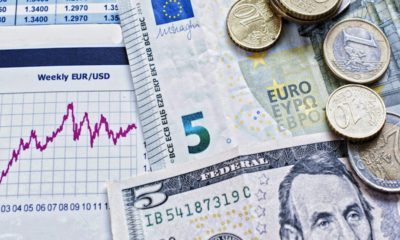Bonds
The Consequences of The Weakening Dollar

Could the dollar start solving problems for U.S. multinationals instead of creating them?
That’s one huge question so far from the first quarter earnings season. The pharmaceuticals giant Eli Lilly raised its full-year sales outlook Tuesday morning, citing the recent weakening of the dollar. This comes after DuPont boosted its 2016 profitability guidance Monday for the same reason.
The extended bull market in the U.S. dollar has taken a toll on multinationals’ results. The Wall Street Journal Dollar Index, which measures the dollar against a basket of foreign currencies, has risen by nearly a third over the past five years.
That tends to harm the results of companies who transact in foreign currencies but report results in dollars. And a large chunk of the S&P 500 index includes companies subjected to currency pressure. Companies in all types of industries have cited the strong dollar as a drag on results in the past year.
The index has dropped by about 4.5% so far this year, however, raising expectancies that some relief is in sight.
Currency benefits aren’t likely to be evenly distributed. No two companies’ exposure to currency risk is identical, of course, and such exposure can be hedged. And it isn’t as if stocks have done poorly in recent years with these foreign exchange pressures. Still, the world’s growth outlook remains sluggish, and many stocks of old line multinationals with limited growth prospects trade at relatively high valuations.
Should this negative financial condition morph into a positive, those premium prices will be easier to justify.







